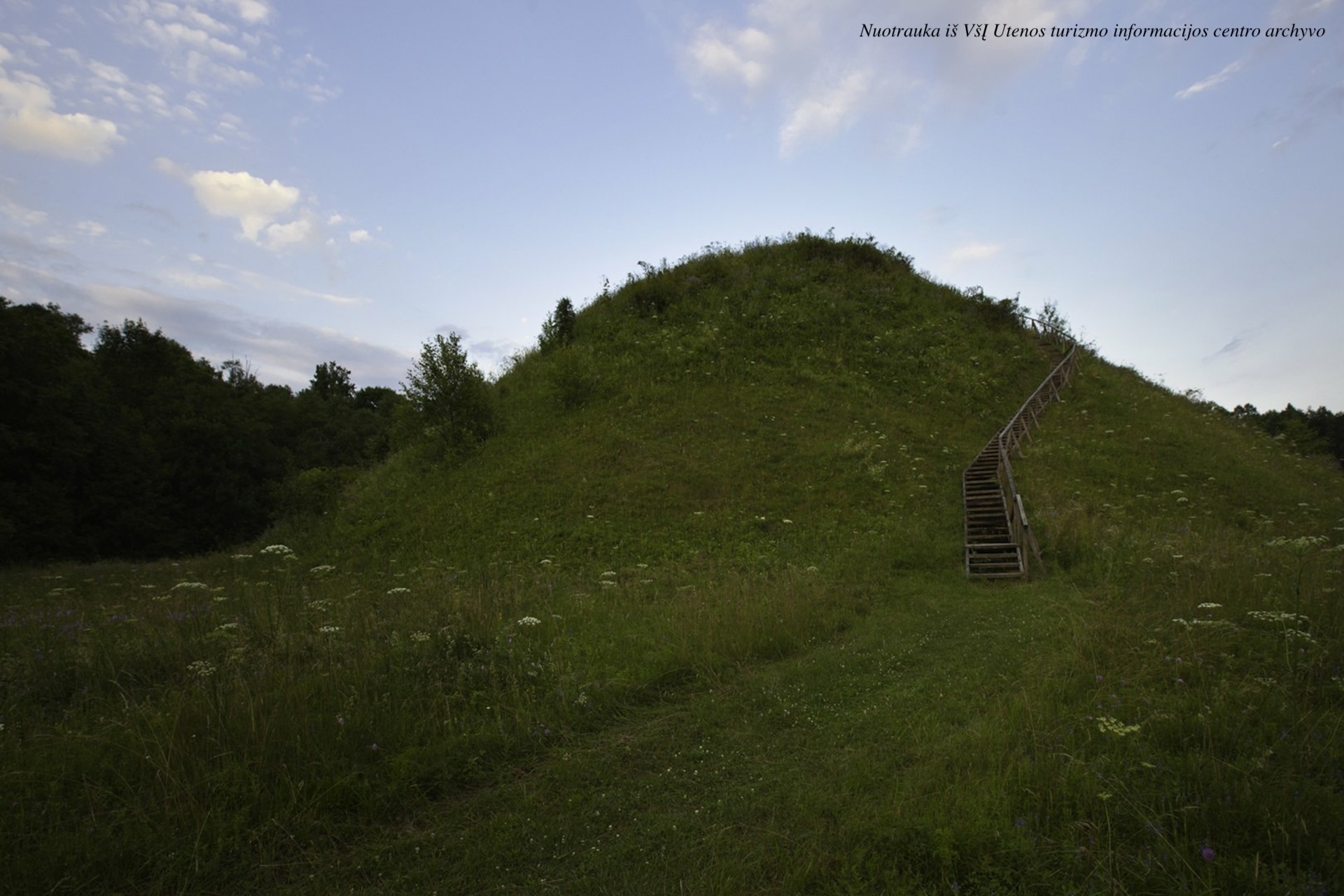The Šeimyniškiai Hill Fort, located near Užpaliai, is an important archaeological and cultural monument dating from the 1st millennium AD to the 15th century AD. This hill fort is distinguished by its trapezoidal platform, measuring 70 meters in length and 40 meters in width on the southeastern side, tapering to 19 meters on the northwestern end. The platform was surrounded by defensive earthworks, and defensive ditches were excavated on the southeastern and northwestern sides to strengthen the hill fort's defenses. The height of the Šeimyniškiai Hill Fort reaches 16 meters, while the forehill area is trapezoidal, 160 meters long and 55 meters wide at the northwestern end, and 130 meters wide at the southeastern end.
At the southeastern end of the forehill, there is a mound, with a defensive ditch excavated outside it. The height of the forehill on the northeastern and southwestern slopes reaches 12 meters. A ditch separating the
hill fort from the forehill on the southeastern slope has a 1-meter-wide terrace, which is a remnant of an old road.
It is believed that this location was once the center of ancient Užpaliai, where the Užpaliai Castle stood. In 1247, the Livonian Order built the Daugavpils Fortress, which served as a base for expeditions into the depths of Lithuania. The Užpaliai Castle became an important strategic defense object designed to repel the attacks of the Sword-bearers. The first known ruler of the Užpaliai Castle was K. Astikas, the founder of the Radvila family, who ruled from the late 14th century until 1442. After the collapse of the Livonian Order in the 15th century, the Užpaliai Castle lost its defensive significance, and the settlement moved to its current location, which was more suitable for agriculture, crafts, and trade. Due to the historical and cultural significance of this hill fort, it has been granted monument status.




 Entertainment
Entertainment
 Sightseeing
Sightseeing
 Food establishments
Food establishments





























 55.658917, 25.62504
55.658917, 25.62504
 Get directions
Get directions









